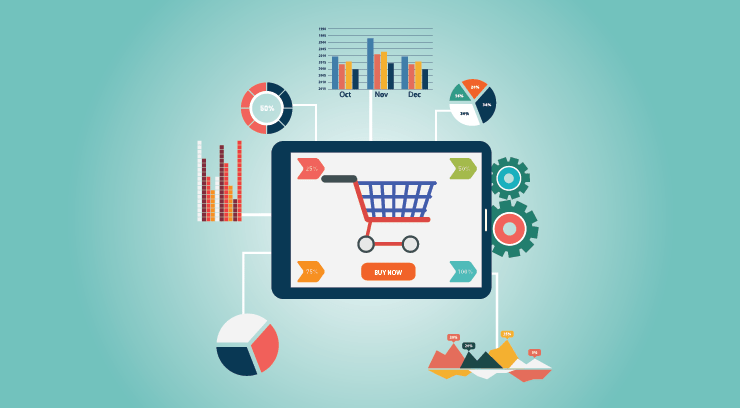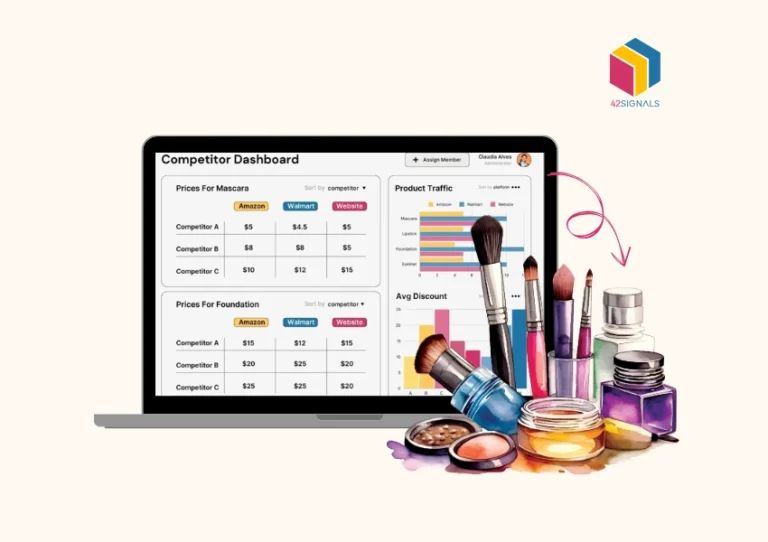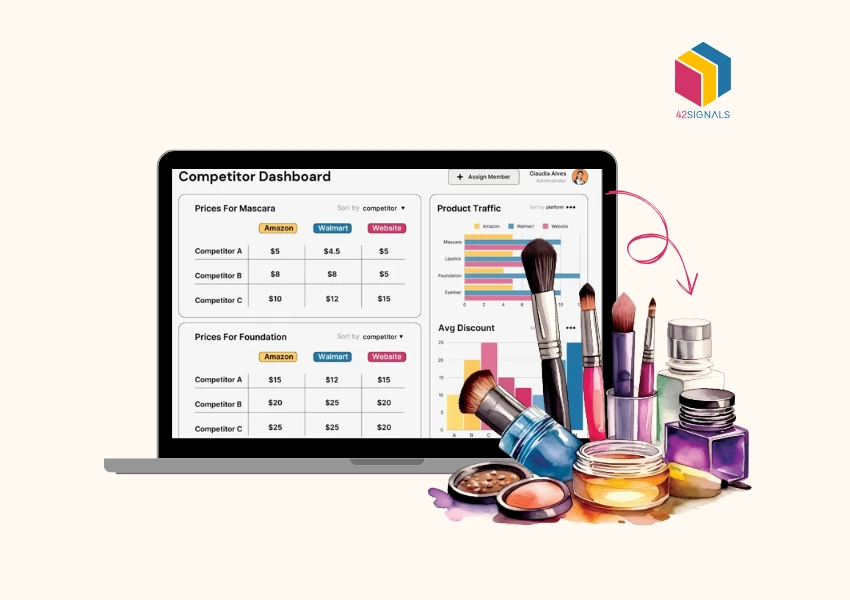Picture a bustling retail scene. A customer hesitates before a display, eyeing a pair of shoes. Behind the scenes, data on Sales Conversion Rate and Inventory Turnover instantly influence the pricing strategy. This is Retail Pricing Analytics at play – where every sale is a carefully orchestrated dance between data and profitability, defining a retailer’s competitive edge.
What are the Key Performance Indicators in Retail?
Key Performance Indicators (KPIs) serve as measurable values that indicate how effectively a retail company is achieving key business objectives. Retailers use KPIs at multiple levels to evaluate their success at reaching targets.
- Sales Conversion Rate: This metric measures the percentage of store visitors who make a purchase. A higher rate indicates more effective sales tactics and customer engagement.
- Average Transaction Value (ATV): ATV signifies the average amount spent per transaction by customers, providing insight into consumer purchasing behavior and pricing strategies.
- Customer Acquisition Cost (CAC): CAC indicates the total cost of acquiring a new customer, factoring in marketing and sales expenses. It’s crucial to determine the efficiency of these campaigns.
- Inventory Turnover: This measures how often a retailer sells and replaces stock over a certain period, showing the balance between sales and inventory levels.
- Gross Margin: A critical financial metric showing the percentage of sales revenue remaining after accounting for the goods sold (COGS). It reflects profitability before other operating expenses are considered.
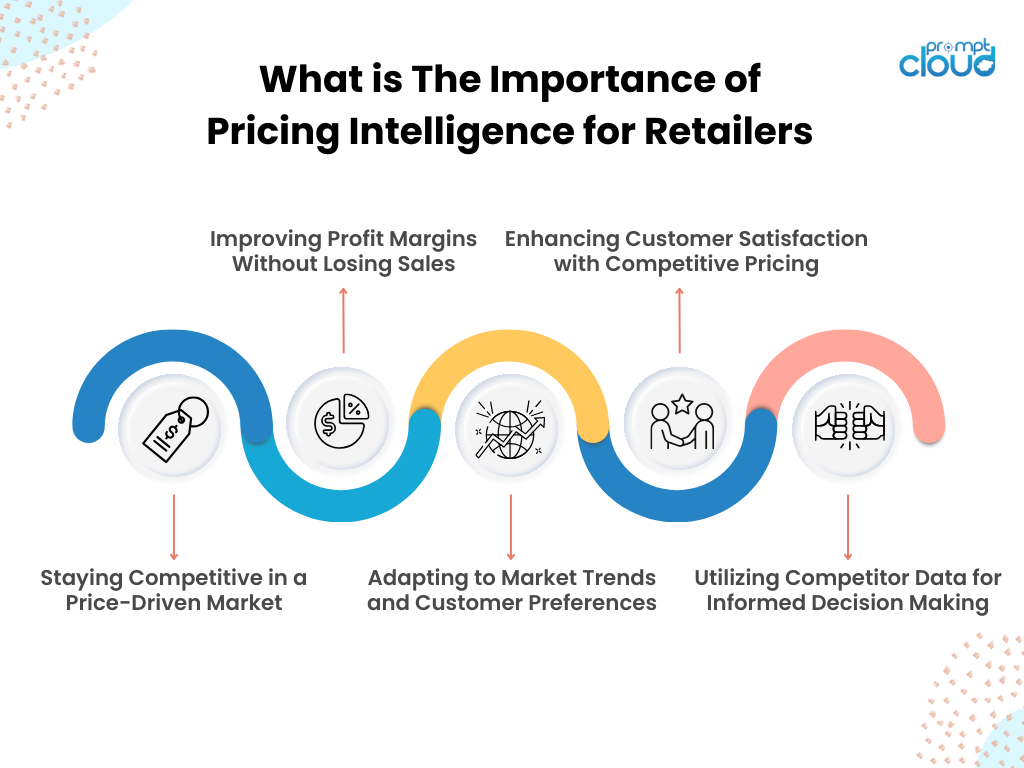
Image Source: PromptCloud
How Do You Estimate Retail Price?
Estimating retail price involves analyzing several factors to determine the optimal price point. Retailers must:
- Consider cost-plus pricing, adding a markup to the cost of goods to ensure profitability.
- Analyze competitor pricing to maintain competitive positioning without starting price wars.
- Incorporate customer perception by gauging willingness to pay and perceived value.
- Use historical sales data to predict future trends and adjust prices accordingly.
- Factor in external influences such as seasonality, market trends, and economic indicators.
Employing these methods with precision is crucial for retailers to establish prices that attract customers and sustain business growth.
What is Retail Pricing Analytics?
Diving into Retail Pricing Analytics means really getting into the nitty-gritty of the data. It’s about tweaking prices to get them just right. Retailers use things like statistical models, machine learning, and data mining to find out:
- The optimal price points for various products
- Customer price sensitivity and demand patterns
- Competitive pricing landscape and market trends
- Potential impacts of pricing changes on sales and profitability
With these insights, retailers can smartly tweak prices, boost customer happiness, and, in the end, ramp up revenue and gain a competitive edge.
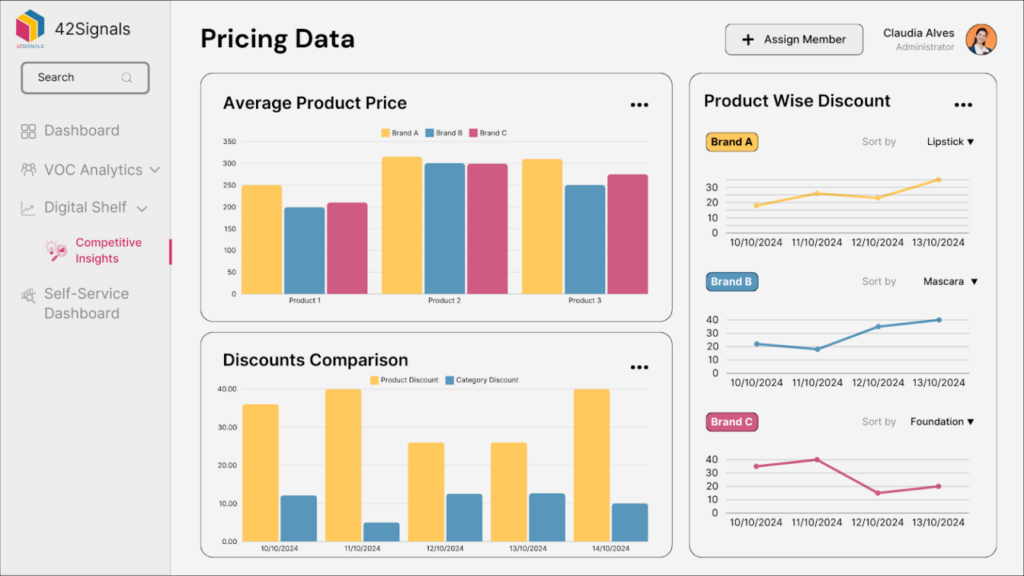
The Role of Data in Shaping Pricing Strategies
Data plays a pivotal role in sculpting pricing strategies for retail businesses. With extensive datasets:
- Retailers can pinpoint optimal price points.
- Analyzing customer purchasing behavior reveals price sensitivities.
- Market trends and competitor pricing strategies become transparent through data analysis.
- Data enables dynamic pricing, allowing retailers to adjust prices in real time.
- Predictive analytics can forecast demand, influencing pricing adjustments for maximizing profits.
In a data-driven environment, strategic pricing becomes an empirical decision-making process, bolstered by quantitative insights rather than mere intuition.
The Interplay Between Pricing Analytics and Stock Availability
Leveraging pricing analytics effectively requires a nuanced understanding of stock availability and its impact on pricing strategies. Retailers must consider:
- How pricing can drive demand for products with high or low stock levels.
- The real-time adjustment of prices based on inventory data to maximize profits and minimize stockouts or overstock situations.
- The potential of dynamic pricing tools to maintain competitive pricing while optimizing stock turnover.
- The balance between offering attractive deals and maintaining a healthy inventory position to meet demand fluctuations.
- Incorporating predictive analytics to forecast future stock needs based on current pricing trends and market conditions.
Understanding this relationship is crucial for retailers aiming to make informed decisions that benefit both their sales targets and inventory management.
Integrating Pricing Analytics with Inventory Management
Solid pricing analytics is important for keeping the right amount of products in stock. When you integrate pricing data with how you manage inventory, retailers can:
- Accurately forecast demand: Predict future sales trends and anticipate stock requirements, reducing the risk of overstocking or stockouts.
- Align pricing with stock levels: Adjust prices based on real-time inventory data, increasing the turnover of slow-moving products and avoiding excessive markdowns.
- Enhance supplier negotiations: Leverage historical pricing and inventory performance data to negotiate better terms with suppliers.
- Optimize restocking schedules: Use predictive analytics to time purchase orders, ensuring inventory levels meet the anticipated demand without incurring excess holding costs.
- Improve customer satisfaction: Ensure products are priced competitively and available when customers want to buy, enhancing the overall shopping experience.
Leveraging Technology for Competitive Pricing Intelligence
Retailers seeking a competitive edge must harness the power of pricing analytics technology. By leveraging sophisticated software tools, retailers can:
- Monitor competitor pricing strategies in real-time
- Analyze vast volumes of data to identify pricing trends
- Utilize predictive analytics to forecast market changes
- Optimize pricing strategies for various customer segments
- Receive alerts for immediate price adjustments in the marketplace
This technological prowess enables retailers to stay ahead of the competition by making informed, strategic decisions regarding their pricing policies, ensuring they offer the most attractive prices without sacrificing profitability.
Conclusion
Pricing analytics can significantly boost a company’s strategic advantage. By adopting sophisticated pricing strategies, retailers can effectively respond to market changes, optimize profit margins, and meet consumer expectations.
Employing these strategies ensures that businesses stay ahead of the curve, making informed decisions that drive success and sustainability in the marketplace. Ultimately, investing in retail pricing analytics is not just about adjusting prices; it’s about securing a dominant position in the retail industry.
